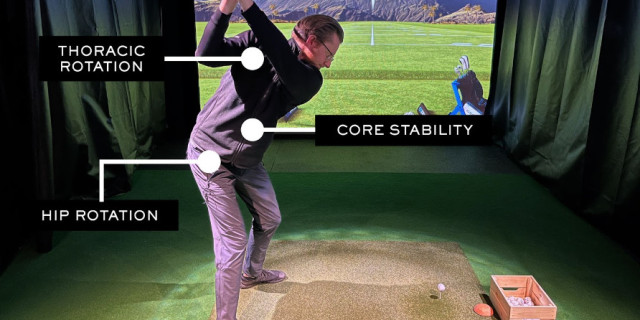
5 Simple Golf Exercises to Protect Your Back
TPI-certified personal trainer and biomechanics coach, Jon Hodgkinson helps you to play golf without pain by sharing these five simple golf exercises designed to protect your back.
Back pain is by far the most common golfing injury.
Nearly every golfer has experienced it at some point in their golfing careers. Data from the Titleist Performance Institute even suggests that 30% of golfers have back pain after every round.
So what’s going on?
The golf swing is a far more technical movement than most people give it credit for.
To execute it efficiently and safely, the body needs a great deal of mobility and stability.
Unfortunately, age and modern life, which involves a great deal of time spent sitting, gradually chip away at these attributes.
That’s the bad news. The good news is that our mobility and stability can be improved at any age by spending a few minutes each day doing some simple exercises.
Note: The advice here is not intended to be a substitute for professional medical advice, diagnosis or treatment.

5 Exercises to Prevent Lower Back Pain for Golfers
Studies suggest that there are three key areas of the body that need to be able to do specific things in the golf swing to reduce the likelihood of lower back pain.
Those areas are:
- The hips
- The upper back (thoracic spine)
- The core
Below are five exercises to address each of these areas. Be sure to perform the exercises in the order they are listed (i.e. stretch first, mobility drill second).
The Hips
The hips need to be able to rotate both internally and externally during the golf swing.
However, it is a lack of internal rotation in particular that is linked to lower back pain.
If you’re standing up, keeping your leg straight, turn the toes of one foot towards the midline of the body by rotating from the hip. That’s internal rotation taking place at the hip joint; the hip is turning inwards to the pelvis.
For a right-handed golfer, the right hip travels into internal rotation when you load into the backswing, and then the left hip travels into internal rotation as you transition to impact and into the follow-through.
What tends to happen is, if you’re lacking hip internal rotation, then you will compensate by rotating through the lower back. And, simply put, the lower back isn’t designed to rotate.
Here are two drills to help improve your hip internal rotation.
Glute Medius Stretch
- Reps: 3x 20-second holds per side
Hip Internal Rotations on Slide Pad
- Reps: 12 each side
The Upper Back (Thoracic Spine)
Unlike the lower back, the upper back is meant to be able to rotate.
And just like the hips, if the upper back can’t rotate, then we tend to compensate by rotating through the lower back.
These are the drills to unlock your thoracic rotation.
Kneeling Lat Stretch
- Reps: 3x 20-second holds per side
Seated Thoracic Rotation With Breathing
Reps: 3 each side
Core
The golf swing is not a gentle movement.
Data from Trackman indicates that the average speed of a driver swing by a male golfer is 93 mph. This translates into compressive forces on the lower back that are up to 8x body weight. For comparison, running produces forces that are up to 3x body weight.
To shield the lower back from these compressive forces, you must have sufficient core stability.
So what exactly is core stability?
Stability is often confused with strength, but they are different things. Strength refers to the ability of the core to produce force, whereas stability refers to the core’s ability to resist force.
We don’t need to do anything too complicated to improve our core stability.
One of my favourite drills is the simple straight-arm plank. For most people this will be enough, but when it becomes too easy we can introduce shoulder taps which trains us to resist rotational forces.
Watch the video below to learn how to do both versions of the exercise correctly.
Straight-Arm Plank + Progression
- Reps: 3x 20-second holds
Wrapping Up
Put these five drills together and you’ve got yourself a quick, effective daily routine for preventing lower back pain when you play golf.
If you’d like to learn more about golf-related lower back pain, then click here: Lower Back Pain: The Definitive Guide for Golfers.
About Jon

Jon Hodgkinson is a TPI-certified personal trainer and biomechanics coach with more than a decade of hands-on coaching experience. Working with clients both online and in-person at their private golf fitness facility, Jon and his team specialise in helping golfers play better, for longer. Visit their website here: Jon Hodgkinson Golf Fitness.
Tags: GOLFERS golf fitness Golf Fitness daily picks









